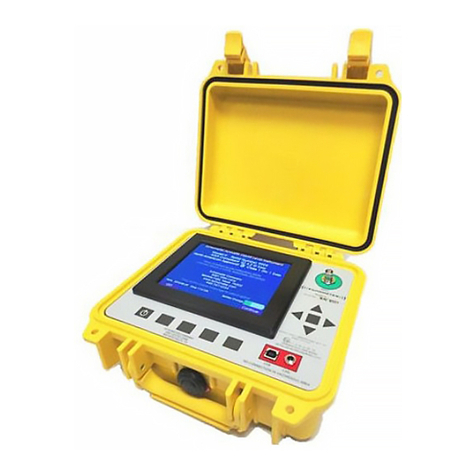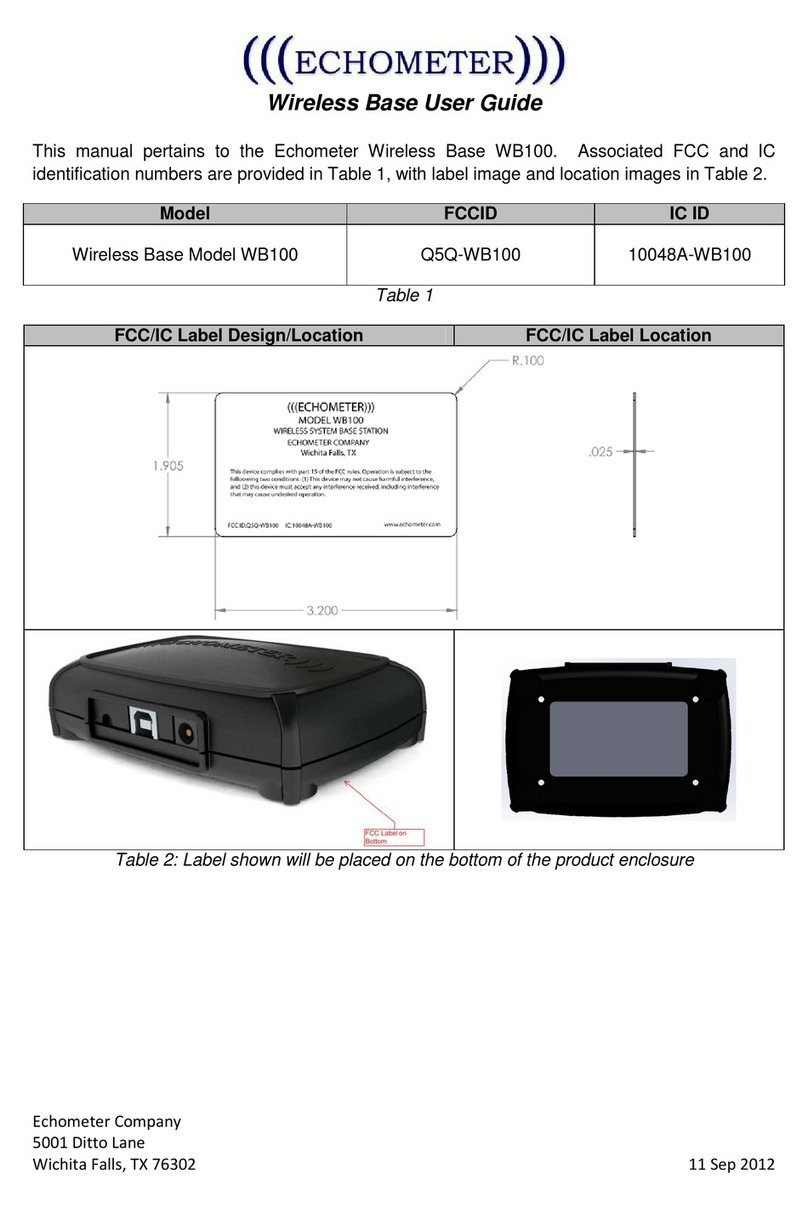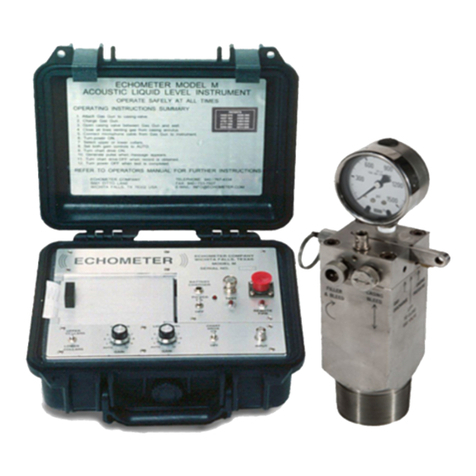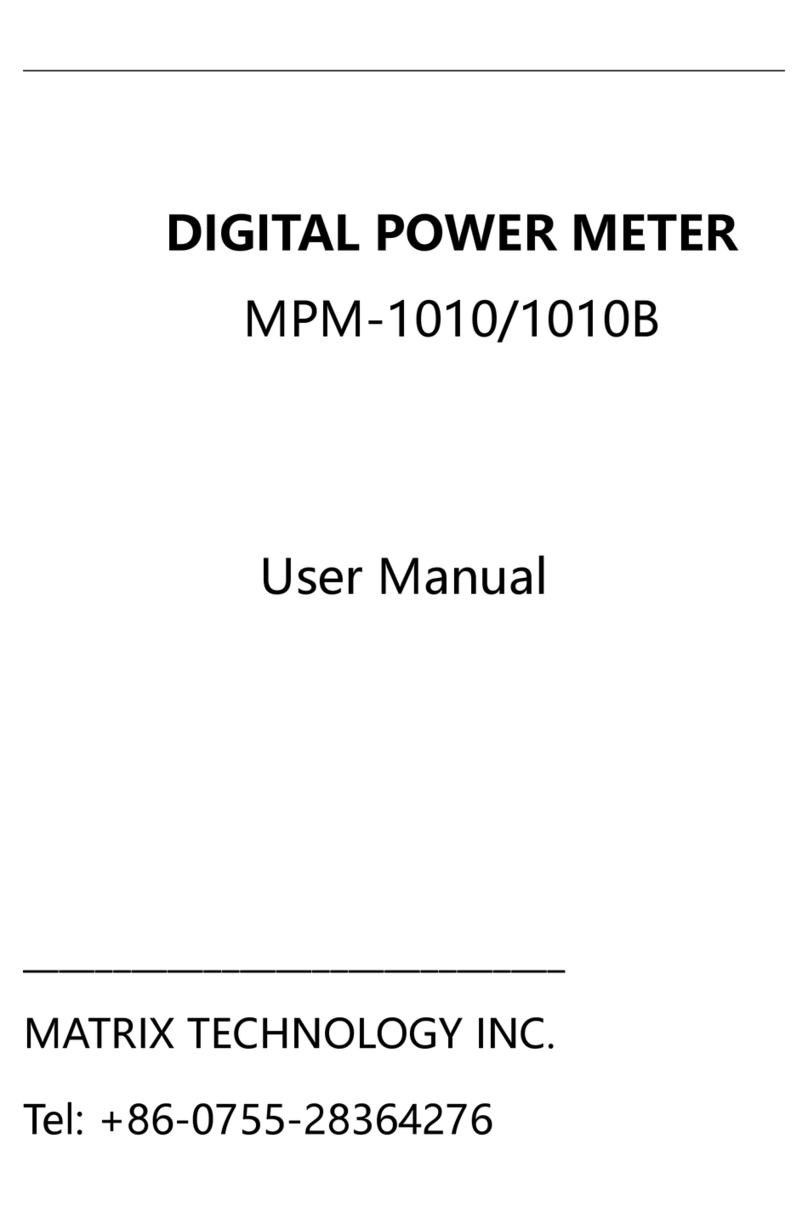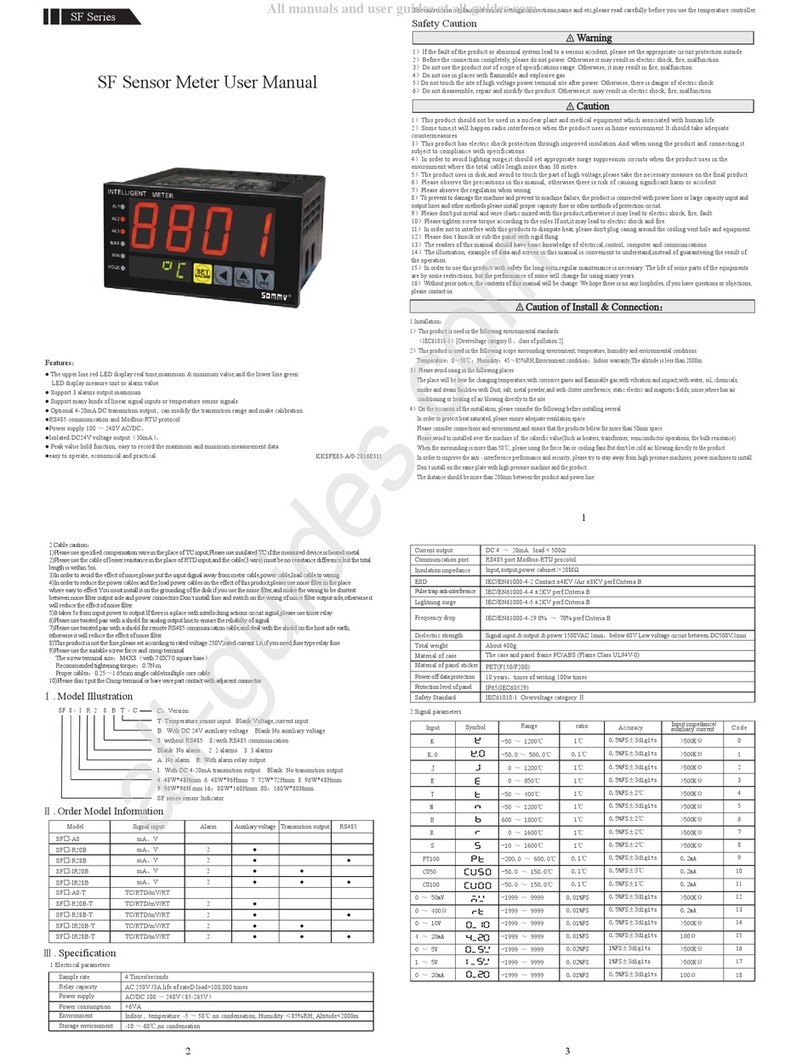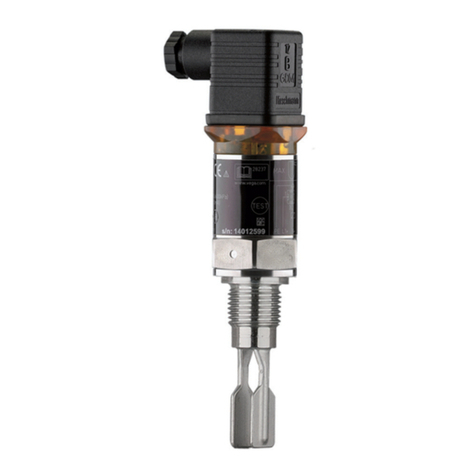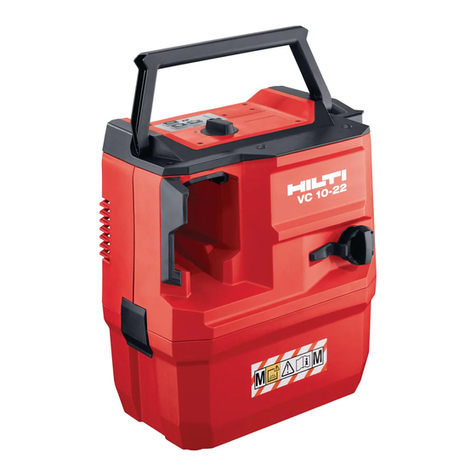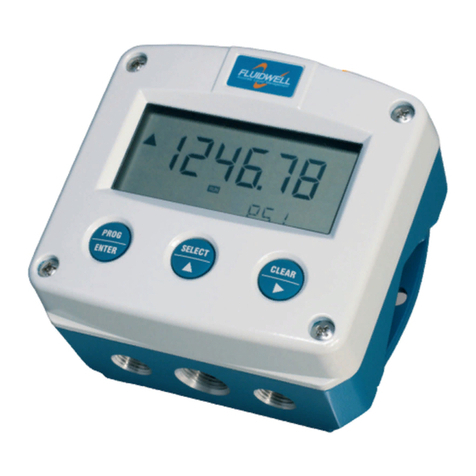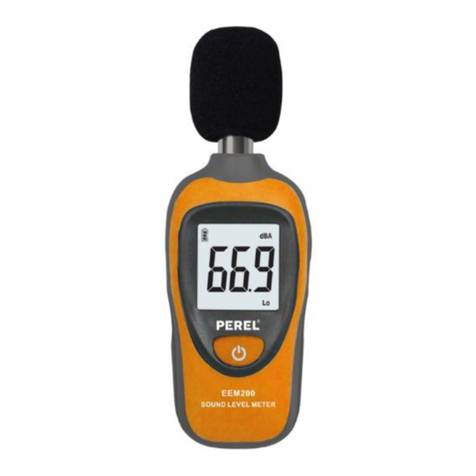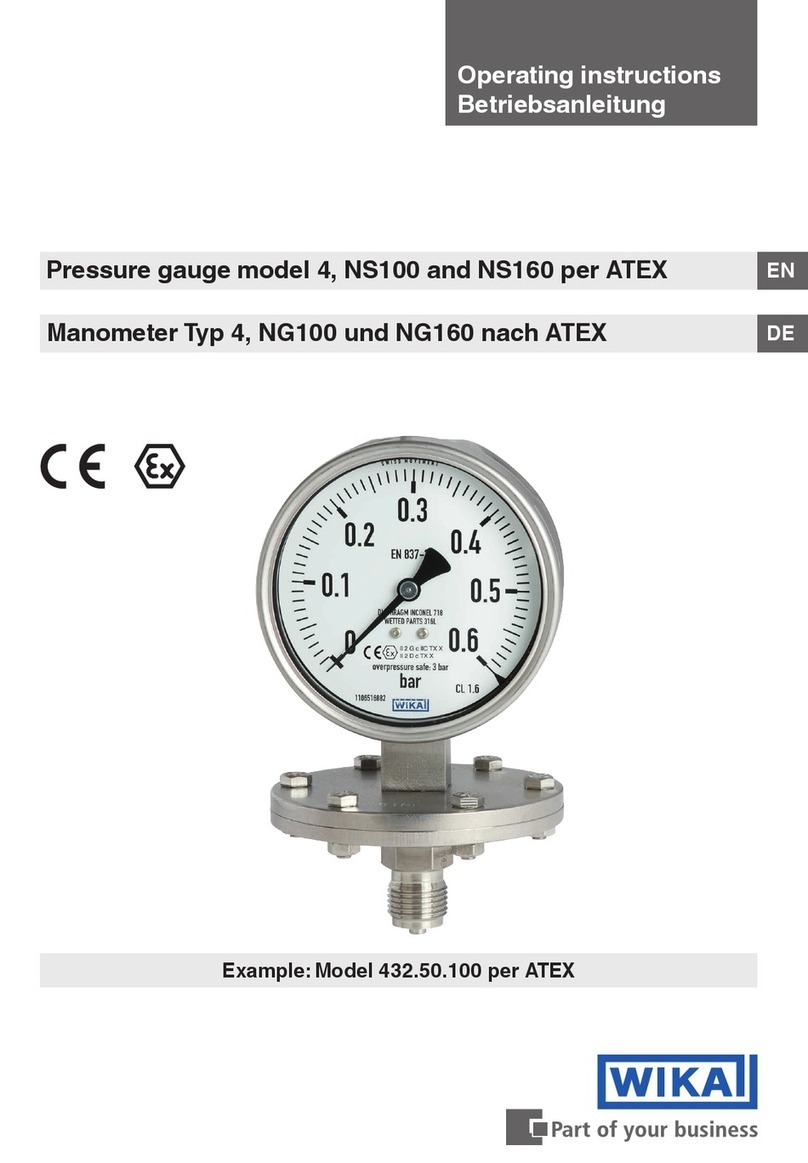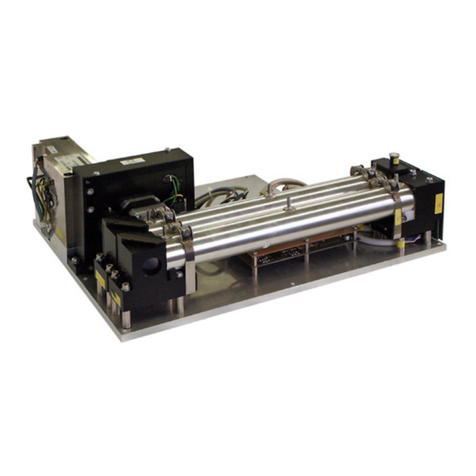Echometer D User manual

Echometer Operating Manual
Model D with Compact Gas Gun
REVA
ECHOMETERCOMPANY
5001 DITTO LANE
WICHITA FALLS, TEXAS 76302 USA
PHONE: (940) 767-4334 FAX: (940) 723-7507
E-MAIL: [email protected]
WWW.ECHOMETER.COM
MS
1950
-
REV
A "MODEL D
WI
COMP
ACT
GAS
GUN


TABLE OF CONTENTS
I.
PRINCIPALS OF ACOUSTIC LIQUID LEVEL MEASUREMENT
II. GENERAL DESCRIPTION
A.
AMPLIFIER-RECORDER
B. WELLHEAD ATTACHMENT
C.
ACCESSORY COMPONENTS
III. OPERATION
IV. INTERPRETATION
V.
PROBLEM WELLS
VI. BATTERY INFORMATION
VII. TESTING THE ECHOMETER
VIII. MAINTENANCE
IX. PARTS LIST AND DRAWINGS
X.
·APPENDIX
RATE OF FILL-UP AND INFORMATION
TECHNIQUE
FOR
DETERMINING CHART
SPEED
C02 INFORMATION
N2INFORMATION
ANALYZING
WELL
PERFORMANCE
ACOUSTIC STATIC BOTTOMHOLE PRESSURES
ACOUSTIC PRODUCING BOTTOMHOLE PRESSURES

PRECAUTIONS
1. Read
Manual
before
operating
equipment.
2.
Operate
the
equipment
safely
at
all
times.
3. Securely connect Echometer
gas
gun
assembly to
the
casing
annulus
opening.
Clean
threads
if
necessary.
Tighten
securely so
the
Echometer
wellhead will
not
become
dislodged by casing
pressure
and/or shock from
the
discharged pressure wave.
4.
The
gas
valve should
be
in
the
open position
when
the
gas
gun
is
installed
on a well.
The
gas
gun
pressure
gauge
will indicate
casing
pressure
when
the
casing valve is opened.
Open valve to
pressure
slowly.
For
safety, open valve a
slight
amount
until
gas
begins
to
flow.
Do
not
open
the
valve
any
more
until
the
pressure
equalizes. Then, fully open valve.
5.
Wellhead
Pressure
Rating.
Working
Pressure
1500
PSI
Test
Pressure
4000
PSI
The
working
pressure
ratings
on
the
Echometer wellhead, fittings, nipples, etc., apply to
like-new condition.
The
ratings
must
be lowered
if
wear
or
corrosfon
has
occurred.
6.
Usually
the
gas
gun
volume
chamber
pressure
is less
than
the
working
pressure
of
the
~
fittings on
the
well. However,
if
the
gas
gun
volume
chamber
pressure
exceeds
the
working
pressure
rating
of
the
connections on
the
well, do
not
discharge
the
gas
in
the
gas
gun
into
a closed valve
as
a
dangerous
pressure
may
result.
7.
Clean
wellhead
attachment
every 500 shots, monthly,
or
whenever dirty, whichever
occurs first. Inspect
and
replace
any
worn
or
bad
parts.
8.
When
assembling
the
wellhead,
install
Microphone
after
installing
the
Housing Cap.
See
Page
VIII.
9.
Do
not
breathe
excessively
high
concentrations
of
C0
2
or
N2 gas.
10.
Recharge
battery
when
voltage drops
in
yeUow arc,
or
once a month, whichever occurs
first.
11.
Package
properly for shipment. Remove
all
heavy
objects from amplifier-recorder case.

I
PRINCIPALS
OF
ACOUSTIC LIQUID LEVEL MEASUREMENT
A pressure pulse is
generated
from a wellhead
attachment
that
is connected to
the
surface
casing
annulus
valve.
The
pressure
pulse
travels
down
the
casing
annulus
gas
and
is reflected
by collars, liquid level,
and
other
obstructions. A microphone
in
the
wellhead
attachment
converts
the
pressure pulses
into
electrical pulses which
are
amplified, filtered
and
recorded on a
strip
ofpaper. The
chart
shows
the
number
of
tubing
collars to
the
liquid level. The depth is
determined by
multiplyin~
the
number
of
tubing
collars by
the
aver~ge
tubing
length.
THE
ECHOMETER
.,
The Echometer
is
a precision
instrument
for
determining
the
depth
to liquid
in
a well.
It
is
the
most advanced
instrument
available
regardless of price. The
upper
collars, deep collars, or
the
liquid level
can
be
accented for
maximum
accuracy. Yet,
it
is
simplified for easy operation
by
the
labeling ofcontrols to
indicate
the
functions performed.
ECHOMETER SCHOOL
Echometer Company offers schools
on
the
use
and
applications of
the
Echometer. You
are
invited to
attend
free
of
charge. A
list
of
the
schools which
are
located
throughout
the
U.S.
and
Canada
will be
sent
upon
request.
Echometer Company
has
an
excellent service policy.
If
we
can
be of service, please contact
us.
Thank
you.
COMPUTER & SPECIAL APPLICATION
A
portable
laptop
computer
is
available for calculating bottomhole pressures. Also,
the
distance
to
an
anomaly
or liquid level
can
be
calculated from accoustic
travel
time
when
gas
properties
are
known.
Contact
us
for
additional
information.

GENERAL DESCRIPTION OF THE ECHOMETER
A.
AMPLIFIER-RECORDER
The
amplifier-recorder receives
the
signals
from
the
microphone, amplifies
these
signals,
filters
the
signals
to accent desired information,
and
records
the
information on
heat
sensitive
paper.
The
controls
and
their
functions follow:
AMPLIFIER POWER SWITCH
II
Ur.its
built
after
June
1, 1985. Momentarily placing
the
switch
in
the
"On" position
energizes
the
amplifier circuit for four to five minutes.
Turning
on
the
chart
drive energizes
the
amplifier circuit for
an
additional four to five minutes. Additional
battery
life will be obtained
if
the
amplifier power switch is
momentarily
placed
in
the
"Off' position immediately
after
the
record
is
completed.
Units
built
before
June
1, 1985. A toggle switch controls power to
the
amplifier.
Turn
the
switch to "On"
and
allow
ten
seconds for stabilization. As a safety precaution, a safety switch
will
automatically
turn
off
the
power
when
the
lid is closed.
SENSITIVITY
Two sensitivity controls
are
located on
the
panel. The
higher
knob is
the
COLLAR
sensitivity control,
and
it
controls
the
sensitivity when
the
filter is
in
UPPER
COLLARS or
DEEP
COLLARS. The lower knob controls
the
sensitivity when
the
filter is
in
LIQUID LEVEL.
FILTER
The
Echometer uses a very effective filter system. The filter is labeled
UPPER
COLLARS,
DEEP
COLLARS
and
LIQUID LEVEL.
The
various filter positions
tune
the
system
to record
the
type
ofsignal desired.
UPPER
COLLARS
tunes
the
amplifier to
high
frequency
signals
which
result
in
the
collars being recorded
as
sharp,
distinct "kicks".
DEEP
COLLARS passes
medium
band
signals
and
records
these
signals
similar
to smooth sine waves.
DEEP
COLLARS
accents deep collars for
greater
accuracy
in
deep
w~lls.
LIQUID LEVEL
tunes
the
system
to
the
low frequency signals found from
the
liquid level
in
deep, low pressure wells.
The
UPPER
COLLARS filter position is used on shallow wells (less
than
4000 feet),
high
pressure
wells,
dirty
wells,
and
wells
with
irregular
length
tubing. The collars
are
recorded
as
"sharp"
kicks.
The
DEEP
COLLAR filter position
is
recommended for most low pressure, deep wells below
4000 feet.
With
normal conditions,
the
upper
collars
are
strong
and
distinct,
and
the
liquid level
is
strong
and
distinct,
but
the
lower collars
are
weak
and
they
become indistinct.
The
DEEP
COLLAR filter position will accent
these
signals while removing undesired
background
noise
and
result
in
the
recording
of
lower collars. This is a more accurate record
than
a record
without
the
lower collars recorded.

11-1
PRESSURE SWITCH (Only on
units
built
before
June
1, 1985)
The
pressure
switch reduces
the
signals from
the
microphone to
the
amplifier when
operated
in
the
HIGH position. This switch is used
in
the
LOW position
with
the
gas gun, since
the
response from
the
microphone can be controlled by
the
size of
the
charge from
the
gas gun.
MICROPHONE CABLE
A shielded cable connects
the
amplifier-recorder to
the
microphone. When
installing
and
removing
the
cable, hold to
the
cable connector only. DO NOT PULL ON THE FLEXIBLE
CABLE BODY. Cable
length
can be
in
excess of 50 feet
if
desired for special conditions
with
negligible loss ofsignals. The shielded cable
prevents
stray
kicks generated by overhead power
lines
and
other
electrical disturbances. Echometer cable is superior to
standard
coaxial cable
and
should be
used
for
best
results.
TEST OUTPUT
See Section VII
RECORDER AND
PAPER
DRIVE
The
chart
drive
and
electrical
writing
pen
are
activated
by
the
toggle switch
near
the
chart
drive.
Turn
ON
the
chart
drive when
ready
to record. Approximately 12" of paper discharge
is
necessary for
the
pen
to
heat.
The
chart
paper
is replaced by removing
the
galvanometer
plate
(push back
and
lift)
and
then
removing
the
used
paper
roll. Place
the
paper
in
the
chart
drive
with
the
printed
side up. Replace
the
pen
cover plate. Be careful
not
to damage
the
pen.
THE GALVANOMETER AND
PEN
REPLACEMENT
The galvonometer does
not
require
maintenance
except for
pen
replacement
and
adjustment.
The
pen
is replaced
by
removing
the
galvanometer cover plate. The plate should be pushed
back
and
lifted. Remove
the
two screws holding
the
pen
leads
and
the
screw holding
the
pen body.
Remove
the
pen
and
insert
a new one. The
pen
teJ:lsion on
the
paper
support should be
about
5
grams
to
get
adequate
writing
darkness
and
proper
pen
response.
Turn
the
pen tension screw
90° clockwise
after
the
pen
touches
the
paper
support roller (no
paper
installed) to obtain
approximately 5
grams
pen
tension. Connect
the
red
wire
on
the
pen
to
the
terminal
block
having
a
red
wire
attached
as
before. Reconnect
the
black
wire. Be sure
that
the
tabs
on
the
pen
are
bent
up to
prevent
the
tabs
from
restricting
pen
movement.
VOLTMETER
See Section VI
"Battery
Information" for details of
battery
operation.
TIMER SWITCH (Manufactured after
July,
1984)
A
timer
places a
mark
on
the
chart
at
the
initial
pulse generation & each second
thereafter.
The
mark
should
be
on
the
printed
side of
the
chart
if
the
initial
wave is a compression wave,
and
on
the
opposite side
when
the
initial
wave is a rarefaction wave. The
timing
marks
can
be
generated
manually
by depressing
the
Timer
switch.

BNC
CONNECTOR
ATTACH CABLE FOR
MICROPHONE OUTPUT.
TRIGGER~
PULL
TO
RELEASE
GAS VALVE.
FILLER-BLEED
CHAMBER VALVE
GAS
CAN
BE
INJECTED
INTO
THE GAS
GUN
VOLUME
CHAMBER USING
SPECIAL ADAPTOR
ATTACHED
TO
C02
CONTAINER. GAS CAN
BE
BLED
BY
ROTATING
THE KNOB CLOCKWISE.
GAS GUN DISCHARGE
PRESSURE
GAUGE
s MEASURES PRESSURE
IN
GAS
GUN
VOLUME
CHAMBER.
COCKING
ARM
/
LIFT
THE COCKING
ARM
TO
DEPRESS
ANO CLOSE THE
..-~~_J!!:::::::::L..~~~..-~..::..~~-...
GAS VALVE.
0
~CASING
PRESSURE
QUICK
CONNECTOR
PERMITS EASY
DETERMINATION
OF
CASING
PRESSURE BY INSERTION OF
AN
ADAPTOR ATTACHED
TO
A PRESSURE
GAUGE.
~CASING
PRESSURE
BLEED
VALVE
TURN
THE
ARROW
UP-DOWN
ANO
PULL
TO
OPEN THE
POPPET
VALVE.

B.
WELLHEAD
ATTACHMENT
The
wellhead
attachment
consists
of
two parts:
the
microphone
and
the
gas
gun.
The
microphone converts acoustical signals into electrical signals.
Do
not
permit
the
electrical receptacle to become damaged or wet.
Do
not
change pressure rapidly.
II-2
The
gas
gun
consists
of
a 10 cubic
inch
volume
chamber
with
a%"
outlet
valve.
The
outlet
valve will open
rapidly
when
the
trigger
is
pulled. This
generates
a pressure pulse.
If
the
pressure
is
greater
in
the
volume
chamber
than
the
casing
annulus,
a compression (or positive)
pressure pulse
is
generated.
If
the
pressure
is
greater
in
the
casing
annulus
than
the
volume
chamber, a rarefaction (or negative)
pressure
pulse
is
generated.
A discussion
of
the
parts
on
the
gas
gun
will be beneficial
in
operating
the
equipment. See
the
gas
gun
drawings.
PRESSURE
GAUGE
The
pressure
gauge
measures
the
pressure
in
the
gas
gun
volume chamber.
If
the
gas
gun
valve
is
open,
the
gauge
indicates
the
pressure
between
the
gas
gun
and
the
casing
annulus
valve.
If
the
casing
annulus
valve is open,
the
gauge indicates
the
casing pressure.
CASING
PRESSURE
QUICK
CONNECTOR
A
casing
pressure
quick connector is located on
the
side. A lower
range
pressure gauge
with
a
mating
adaptor
will fit into
the
casing pressure quick connector to enable
the
operator to
obtain
the
casing
pressure
when
greater
accuracy
at
low pressures is needed.
The
pressure
gauge
and
adaptor
simply
push
into
the
casing pressure quick connector.
COCKING
ARM
The
cocking
arm
is
lifted to depress
and
close
the
gas
valve.
·?

II-3
CASING PRESSURE
BLEED
VALVE
The casing
pressure
bleed valve is a poppet
type
valve to bleed
the
casing pressure. To open
the
valve,
turn
the
knob
until
the
arrow
is
up
-down
and
pull
out
the
knob. The discharge from
the
gas valve is sudden. Be careful
not
to blow
sand
or
debris which could injure personnel.
The casing
pressure
bleed valve
can
be used to
generate
the
initial
pressure
pulse. Rapidly
open
the
casing
pressure
bleed valve
and
allow
it
to
remain
open
and
bleed gas from
the
well
until
the
record is obtained.
Do
not
close
the
casing
pressure
bleed valve before
the
reflection
from
the
liquid level is obtained. Closing
the
casing
pressure
bleed valve will
result
in
another
pulse being
generated
and
multiple
reflections will be obtained from down
the
well.
FILLER-BLEED CHAMBER VALVE
The filler-bleed
chamber
valve is used to pressurize
the
gas
gun
volume
chamber
or
to
remove gas from
the
chamber.
Gas
is
added
to
the
gas
gun
volume
chamber
by
insertion
of
a
mating
quick connector
attached
to a pressurized gas source into
the
filler-bleed
chamber
valve.
Gas is bled from
the
chamber
by
rotating
the
knob clockwise. Clockwise
rotation
of
the
filler-bleed
chamber
valve
results
in
depression
of
the
valve core
and
hence bleeding
of
the
volume
chamber
thru
the
filler-bleed
chamber
valve.
TRIGGER PAWL
The
trigger
pawl
is
pulled
to
release
the
gas
valve.
If
sufficient
pressure
exists
in
the
volume
chamber
or
on
the
end
of
the
gas
valve,
the
gas valve will open.
MICROPHONE
The
microphone is a twin-disc pressure-sensitive device
that
is
vibration
cancelling.
C.
ACCESSORY COMPONENTS
The
standard
accessories include recording paper, eleven point dividers, a choice
length
microphone cable, a 110 VAC
automatic
recharger, a 12 VDC automobile cigar
lighter
recharger,
and
an
operating
manual.
A
gas
supply cylinder is necessary
on
low
pressure
wells.
Three
7.5 ounce
C0
2
containers
with
quick connect filler connector, a refill
adaptor
and
scales
are
standard
unless
the
optional
5#
bottle
with
hose
and
quick connect filler connector
are
specified.
Extra
manuals
are
free.

III
Operation
of
the
Echometer
with
Compact
Gas
Gun
Wellhead
The
compact gas
gun
is to
be
operated
in
the
Explosion or Implosion mode
depending
upon
the
casing
pressure. Use
the
Explosion
technique
when
the
casing
pressure
is
less
than
approximately
100 PSI. Use
the
Implosion
technique
when
the
casing
pressure
is sufficient to
obtain
a good record.
A. EXPLOSION ofcompressed
gas
from
the
Echometer gas
gun
can
be
used
to
generate
the
pressure
pulse.
The
pressure
pulse
is positive. (Use
with
less
than
100
PSI
casing
pressure).
1.
Securely
attach
Echometer
gas
gun
to
casing valve.
2. Close
Casing
Pressure
Bleed Valve
and
Filler-Bleed
Chamber
Valve.
Open
casing
valve slowly.
3.
Pull
trigger
ring
and
measure
casing
pressure. (Use precision
pressure
gage
with
adaptor
if
desired).
4.
Lift
cocking
arm
to
close
gas
valve.
5.
Fill
volume
chamber
with
gas
(C0
2 or N2) to 150 PSI.
Use
a
higher
pressure
only
if
the
liquid level response
is
not
distinct. Less pressure should be
used
if
satisfactory
records
are
obtained
at
lower pressures.
6.
Turn
amplifier
ON
and
allow 10 seconds for stabilization while connecting cable.
7. Select
type
of
collar
response
desired
and
increase collar
sensitivity
until
pen
response is 1
/s". (Reduce well noise
if
necessary).
8.
Turn
chart
drive
ON
and
run
12 inches of
chart
paper.
9.
Generate
pressure
pulse
by
pulling
trigger
ring.
10.
Turn
amplifier
OFF
after
operation:'

III-1
B.
IMPLOSION
of
compressed
gas
from
the
casing
annulus
into
the
Echometer
gas
gun
is
used
to
generate
the
pressure
pulse.
The
pressure
pulse
is
negative.
(Use
when
the
casing
pressure
is
between
100
PSI
and
the
working
pressure
rating
of
1500 PSI. Use
at
lower
pressures
if
satisfactory
records
are
obtained).
1.
2.
3.
4.
5.
6.
7.
8.
9.
10.
Comments
1.
2.
3.
Securely
attach
Echometer
gas
gun
to
casing
valve.
Close
Casing
Pressure
Bleed
Valve
and
Filler-Bleed
Chamber
Valve
and
very
slowly
open
casing-valve. Do
not
allow
pressure
to
increase over 500
PSI
per
second.
Damage
to
the
microphone
can
result
when
rapid
pressure
changes
occur.
-
Pull
trigger
ring_
and
measure
casing
pressure.
(Use precision
pressure
gage
with
adaptor
if
desired.)
Lift
cocking
arm
to close
gas
valve.
Bleed
gas
gun
pressur.e
through
Filler-Bleed
Chamber
Valve
by
rotating
knob
clockwise
until
~he
gas
gun
pressure
has
been
decreased to
approximately
200
PSI
below
the
casing
pressure.
Use
greater
or
lesser
differential
pressure
if
greater
or
lesser
response is desired.
Turn
amplifier
ON
and
allow 10 seconds for stablization while connecting cable.
Select
type
of
collar response
desired
and
increase
collar
sensitivity
until
pen
response
is
1/s".
(Reduce well noise
if
necessary).
Turn
chart
drive-
ON
and
run
12
inches
of
chart
paper.
Generate
pressure
pulse
by
pulling
trigger
ring.
The
generated
pressure
pulse
is
negative.
Chart
i;esporrse
direction
will
be
reversed.
Turn
amplifier
OFF
after
operation.
Before
removing
the
gas
gun
from
the
casing
valve, bleed
gas
by
opening
the
casing
pressure
bleed
valve. Tlie
casing
pressure
bleed
valve is
the
solid
%"
knurled
knob.
Turn
arrows
up-doWn. Be careful.
If
sufficient
pressure
exists
behind
the
poppet
valve,
the
valve
will open itself.
If
the
pressure
is low,
pull
the
valve open.
On
deep wells,
the
filter
should
be
in
DEEP
COLLAR position.
DEEP
COLLAR
position
accents
the
lower collars.
On
shallow
wells
or
if
the
upper
collars
are
not
distinct
on a deep well,
set
the
filter
to
UPPER
COLLARS.

111-2
4.
If
the
fluid
level
is
not
recorded,
(especially on deep, low pressure wells),
after
step
7 above, place filter
in
LIQUID LEVEL position
and
increase
the
lower
sensitivity
knob
until
pen
response
is
1/s".
Then
set
filter to collar position. After
generating
the
pressure
pulse, note
the
pen
response carefully. When collar
response
has
diminished
to
1/s"
background noise, switch
the
filter to LIQUID
LEVEL
so
that
the
amplifier will be
tuned
to
the
response from
the
LIQUID
LEVEL.
5. All
pen
responses will be reversed
in
the
IMPLOSION technique since
the
pressure
is
negative
in
comparison to
the
normal
positive
pressure
pulse.
6.
If
a
larger
liquid
level response
is
desired, use a
greater
differential
pressure
between
the
gas
gun
volume
chamber
pressure
and
the
casing
annulus
gas
pressure.
Do
not
use
a
larger
differential
pressure
unless needed.
7.
Operating
the
gas
gun
at
300
PSI
requires
twice
as
much
gas
as
operating
at
150
PSI. Only
one-half
as
many
shots will be obtained from a cylinder. When
using
C0
2
gas
above 300
PSI
(at
normal
temperatures), liquid
may
form
in
the
gas
gun
which
will
result
in
considerably more
gas
being used
per
shot.
8.
When
using
nitrogen
gas,
use
a
regulator
so
that
the
pressure
cannot
exceed
the
working
pressure
rating
of
1500 PSI.

III-3
DETAILS
OF
OPERATION
Attach
Echometer wellhead to casing valve.
The
Echometer microphone should be
as
near
as
possible to
the
casing
annulus,
preferably
within
5 feet.
Short
lengths ofpipe can
mask
the
desired downhole signals. Longer
lengths
will give multiple reflections which
are
hard
to
distinguish from collar reflections. Use a
minimum
of
90°
ells
and
tees
and
direct
the
blast
directly into
the
well
if
possible. Two
inch
connections
are
preferable
but
one inch connections
are
generally satisfactory
if
the
length
of 1" pipe is held to a minimum.
The
amount
and
number
of
unfavorable conditions which
can
be
tolerated
are
determined
by
the
difficulty of
the
well.
If
the
well is easy to test,
then
a few unfavorable conditions can
be
tolerated.
If
the
well is
difficult,
the
unfavorable surface conditions
may
prevent
a satisfactory record. Normally,
unfavorable surface connections
interfere
more
with
collar
than
with
liquid level response.
Proper sensitivity
setting
is very important. Increase sensitivity
until
pen
response is 1
/s".
The
setting
indicates
the
background well noise level. Background noise is caused by surface
vibrations,
leaking
gas connections, downhole gas "popping" out ofliquid,
and
other
unstable
conditions. This background noise is
not
a
part
of
the
signals
that
result
when
the
pressure
wave is generated.
Do
not
increase
the
sensitivity
after
the
pressure wave is generated or
background noise will
be
recorded.
Background noise
must
be considered.
The
pressure wave travels down
the
well
and
is
reflected by collars
and
the
liquid level. The top collar reflections
are
strong,
and
the
lower
collar reflections become
much
weaker.
The
liquid level reflection varies from a strong signal
in
a shallow high-pressure well to a very
weak
signal
in
a deep low-pressure well. Only signals
stronger
than
background noise
can
be recorded.
It
is obvious
that
strong background noises
must
be
reduced
if
the
recording
of
lower collars
and
liquid level is obtained
in
a deep, low
pressure well. More background noise
can
be tolerated
in
high
pressure, shallow wells because
the
desired signals
are
stronger.
In
general, a background noise sensitivity
setting
of
3-5 is
sufficient on shallow
and
higher
pressure
wells, while a
setting
of5-10
may
be
required for
satisfactory
results
on a deep low-pressure well.
·?

III-4
Background noise
can
be classified
as
surface noise
or
down-hole noise.
The
source
of
the
noise can be
easily
determined
by
increasing
the
sensitivity
until
pen
movement
is obtained.
Then
close
the
casing
valve
between
the
microphone
and
the
casing
annulus.
If
the
random
pen
movement
reduces,
the
noise is
originating
from
the
other
side
of
the
valve which would be
down-hole noise
or
noise
caused
by
surface
gas
leakage
on
the
other
side of
the
valve.
If
the
pen
movement
remains
the
same,
then
the
noise is
either
surface
vibrations
or
noise caused
by
gas
leakage
from
extraneous
lines connected on
the
same
side of
the
casing
valve
as
the
wellhead.
Surface noise
generally
originates
from surface vibrations.
The
microphone is shock
mounted,
but
if
the
wellhead
attachment
vibrates,
signals
are
generated.
Wellhead
Vibrations
should
be
stopped for
better
records on deep low-pressure wells.
Vibrations
result
from
running
gas
engines,
chattering
check valves,
and
other
operating
surface
equipment.
Other
possible
surface
noises include
leaking
gas
connections,
leaking
valves,
and
operating
regulators.
Close
all
other
lines
leading
from
the
casing
annulus.
The
main
source
of
downhole noise is
gas
"popping"
out
of
a gaseous column.
When
pen
movement
occurs
at
sensitivity
settings
of
less
than
5,
always
check for a gaseous column. See
"Analyzing Well Performance"
in
the
appendix. Downhole noise
can
also
result
from
tubing
&
casing leaks.
The
filter
can
be
used
to remove background noise
in
many
cases.
Try
all
3 filter positions
if
necessary.
The
filter
position
which
has
the
highest
sensitivity
settings
for
1/s"
pen
response
often gives
best
results.
Generally,
the
downhole noise
can
be reduced
in
relation
to
the
desired
reflected
signals
by
increasing
the
casing
pressure.
Continue
to
pump
the
well
with
the
gas
vent
valves closed.
At
low pressures,
an
increase
of
10
PSI
casing
pressure
almost
always
improves
the
record
and
depresses a solid
liquid
column
about
30 feet.
If
the
liquid level
signal
is
not
obtained
due to excessive surface noise
or
downhole noise,
a
larger
signal
from
the
liquid
level
can
be
obtained by
generating
a
larger
initial
pressure
pulse.
Increasing
the
Sensitivity
above
the
background noise level
makes
interpretation
much
more difficult
and
is
not
recommended.

IV
INTERPRETATION
The normal
chart
has
a kick
at
the
beginning of
the
run
signifying
the
initial
pressure
pulse, a series ofsmall evenly spaced kicks indicating
the
collars,
and
the
large kick indicating
the
liquid level. On some
charts,
the
collars
can
be distinguished from
the
top of
the
chart
to
the
liquid level
and
each collar
can
be counted. The spacing divider can be used
if
desired. On
other
charts,
the
collars
cannot
be distinguished clearly
all
the
way down
the
chart
to
the
liquid
level kick.
In
such cases,
count
the
collars down to
the
last
distinguishable collars. Then,
extrapolate to
the
liquid level
using
the
spacing dividers
set
with
the
same spacing
as
the
last
distinguishable collars. Often
the
collars
near
the
top of
the
chart
are
closer
together
than
those
in
the
lower portion of
the
chart
on wells which
are
not venting
gas
from
the
casing annulus.
The
change is caused by
heavier
gas
settling
in
the
lower portion of
the
well. Sound
travels
slower
in
a heavy gas. The collars become closer together
near
the
bottom of
the
hole when gas
is
being
vented
at
the
surface
and
the
bottomhole temperature-is
higher
than
the
surface
temperature.
The
higher
temperature
causes
an
increase
in
the
velocity
of
sound. Be
sure
to
count
the
collars
as
accurately
as
possible down to
the
last
distinguishable collars.
In
some
cases,
the
collars
are
indistinct.
Set
the
spacing divider for .the same spacing
as
shown
by
the
best
collars
and
count from
the
instant
of"blast" to
the
liquid level
using
this
spacing.
The
liquid level
depth
can
also be determined by measuring
the
travel
time
and
knowing
the
acoustic velocity from
gas
property
data.
Acoustic velocity
charts
are
available. Also, a
portable computer
can
be used. Information is available on reque·st.
On
an
average well,
the
following
events
will be recorded on
the
chart.
A kick will show
the
initial
blast. A series of
small
kicks will indicate
the
collars,
a:nd
then
the
liquid level kick will
be recorded.
If
the
chart
is allowed to
run,
another
kick will often occur below
the
liquid level
kick. This reflected liquid level
kick
is caused by
the
blast
which
travels
down
the
well, is
reflected by
the
liquid level
back
to
the
surface, is
again
reflected by
the
casing
head
back down
the
well;
and
again
it
is reflected
by
the
liquid level back to
the
surface. The distance from
the
initial
blast
to
the
first liquid level
kick
will be equal to
the
distance between
the
first liquid
level kick
and
the
second reflected level kick. Multiple liquid level reflections on shallow liquid
levels
can
be misinterpreted. ·
.)
. -
The
direction ofkick indicates
enlargement
and
reductions.in
the
cross sectional
area
of
the
annulus.
Objects which reduce
the
cross-sectional
area
of
the
annulus
result
in
compression
waves
and
are
recorded
as
downward kicks (toward
the
printed
side of
the
chart)
when
the
top of
the
chart
is to
the
left.
Such
objects would be liners,
tubing
anchors, paraffin deposits or liquid
level. Conditions increasing
the
cross sectional
area
of
the
annulus
result
in
rarefaction waves
and
are
recorded
as
upward
kicks.
Such
conditions
are
perforations, "shot" holes,
parted
casing,
or
parted
tubing.
If
the
Implosion technique is used,
the
direction
of
pen
response will be
reversed.

0
IV-1
The
liquid
level is recorded
as
a
downwarn
kick. (See
chart
below).
If
the
liquid
level is 20
feet
or
so
in
a
"shot"
hole,
the
pen
would
first
kick
upward
then
down
as
the
sound
wave
was
reflected from
the
liquid
level. Recording
the
liquid
level below a
liner
would show a
downward
kick
at
the
liner,
and
downward
kick
at
the
liquid level,
and
an
upward
kick.
The
distance
between
the
liner
kick
and
the
liquid level
kick
is
equal
to
the
distance between
the
liquid
level
kick
and
the
liner
reflection kick.
The
liner
reflection
kick
results
when
the
liquid level
reflection
signal
is
travelling
upward
and
passes
the
liner
increase
in
cross-sectional
area.
This
generates
a
rarefaction
wave
which
returns
to
the
bottom
and
then
travels
to
the
surface
where
it
is recorded.
L1t.;v1{)
L~vEJ..
~
r ,
Hf.
-
J 7
'701#7.S
TtJ
J..I
f?VI/)
LEYEI-
-·
·f-H
t-1
f
t-,L/
l H
.
10
LI
I
'~
' J L A _,. '
..
,
f"'
f"V-Y
..
zo
/'el?
F
~I?
A-r
/tJ
A/.S
,,.
-ft
~"'INT.$
ro
~
l..J9Pll>
LEvEJ...
LI
f?/.J
I/)
L..EvEL
14/:
Z8
'J"OlkTS
l/IY/[
If
~FFleC.
//6-4/
1'

PROBLEM WELLS
The
problem of
obtaining
a good record is generally caused
by
excessive surface vibrations,
excessive downhole noise (gaseous liquid columns), improper wellhead connections,
dirty
microphone
and
electrical connections, or low casing pressure.
Excessive surface vibrations
and
downhole noise should be reduced. The SENSITIVITY
permits
an
actual
measure
ofextraneous noise. See Section III -Details of Operation.
v
The
wellhead
attachment
should be
attached
directly to
the
casing valve,
and
all
other
valves should
be
closed to
obtain
the
best
records.
Attaching
the
Echometer wellhead over 5 feet
from
the
casing
can
cause misleading reflections from
the
collar response.
Keep
the
microphone cable connectors clean
and
dry.
Stray
signals will
result
when
the
connectors
are
dirty. Also, keep
the
microphone clean.
Gaseous liquid columns caused
by
gas bubbling
through
oil
can
be a problem. Increasing
gas
pressure by closing
the
surface casing valves will generally
result
in
a liquid level reflection.
Only a small discharge
of
gas is necessary to form a gaseous column
in
a small
annulus
completion.
Larger
quantities
are
necessary to cause gaseous columns
in
large casing,
small
tubing
completions. Any well
venting
gas to
the
atmosphere,
venting
gas to
the
flow line, or
using
casing
gas
to operate
an
engine
should be checked.
The
amount
ofliquid
present
in
a
gaseous column
can
be
determined
by
a casing
presure
build-up test. Another technique is
compression of
the
gaseous column
with
casing pressure to
determine
the
gaseous columns
gradient. See "Analyzing Well Performance"
in
the
appendix.
The
best
way
to verify a liquid level
in
a producing well from
other
"kicks" (such
as
linets)
is
to cause
the
liquid level to move.
The
liquid level is
the
only "kick"
that
can
move
in
a well
and
such
a movement verifies a liquid level. A
high
level
can
be depressed
by
increasing
the
casing pressure.
An
increase
of
10
PSI
in
the
casing
pressure
will depress
the
liquid level
approximately 30 feet.
The
liquid level will rise
when
a producing well is shut-down. See
Rate
of
Fillup
Graph
for
the
amount
of
time
required for liquid level rise.
.)
If
numerous
"kicks"
are
recorded on a
chart
which
are
difficult to
interpret,
another
test
should be
taken
and
compared to
the
first test. All "kicks" should be duplicated on each
chart.
If
"kicks"
are
not
duplicated,
stray
noises caused
them
and
these
stray
noises should be stopped
as
described above.

The
effect
of
pressure
is
very
important.
Stronger
signals
are
returned
in
high
pressure
wells.
Increasing
the
casing
pressure
by 10
PSI
is beneficial
in
deep, low-pressure wells.
Atmospheric
pressure
and
vacuum
wells do
not
return
strong
signals from down
the
annulus
and
a
large
"blast"
may
be necessary.
V-1
On
rare
occasions,
paraffin
deposits,
dirty
tubing
or
other
conditions
can
result
in
downhole
conditions which
make
the
counting
of
collars
or
the
determination
of
the
liquid level difficult.
In
extreme
conditions,
it
may
be necessary to clean
the
tubing
and
casing to remove foreign
material.

BA'ITERY
INFORMATION
A sealed,
rechargeable,
lead
cell, 2.5
amp
hour,
12 volt
battery
is
used
in
the
amplifier-recorder.
The
battery
is
similar
to
the
new, sealed,
12
volt
automobile
battery.
The
Echometer
will
operate
from
the
self
contained
rechargeable
battery
or
from a
power
cord
which
is
plugged
into
the
automobile
cigar
lighter.
VI
A 110 VAC
charger
permits
charging
of
the
Echometer
battery
from a common 110 VAC
power
outlet.
Approximately
14
hours
is
required
to
charge
a discharged
battery.
The
110
VAC
charger
will
charge
the
battery
at
a 250
ma
rate
until
the
battery
voltage
reaches
about
15
volts
which
indicates
the
battery
is
almost
fully charged.
Then
the
charger
will
trickle
charge
at
a 25
ma
rate.
The
red
light
on
the
charger
is
ON
when
the
charger
is
charging
at
high
rate.
When
the
charger
is
in
trickle
charge,
the
light
is
OFF.
The
charger
whould be
left
connected
to
the
battery
until
the
red
light
goes
out
and
ceases to
turn
ON
and
OFF.
Then
the
battery
is
almost
fully charged.
The
battery
should
be
recharged
at
a
temperature
of
approximately
70°F (20°C).
Continuous
charging
does
not
damage
the
battery.
,
When
operating
with
the
cigar
lighter
power cord,
the
battery
will be
partially
charged
by
an
operating
automobile
system
in
5
to
15.
minutes,
and
will
be
completely
charged
if
the
car
is
driven
for 8
hours.
Attaching
the
power cord
to
the
cigar
lighter
with
the
engine
running
for a
_short
time
will
charge
a low
battery
sufficiently for a few tests.
The
power cord
can
be
permanently
attached
to
the
car
battery
if
desired.
The
battery
should
be
charged
when
the
operating
voltage drops
to
approximately
11.3 volts
which
is
the
top
of
the
yellow arc.
The
battery
can
be
charged
more often
if
desired.
Best
operating
performance will be
obtained
with
battery
temperatures
of
0°F to 120°F
f·l5°C
to
+50°C).
The
battery
has
less capacity· aJld voltage
at
lower
temperatures.
Failure
is
indicated
if
the
test
procedure
given
in
SectionVII does
not
produce
the
desired
results.
Temperature-
oF
oc
104 40
77
24
32 0
-4 -20
Battery
Life*
Hours
4
3.5
3
2
*Amplifier
and
chart
drive
ON:
battery
fully charged.
A fully
charged
battery
operating
at
70°F
has
sufficient
energy
to
test
1000
wells
which
requires
about
25
rolls
of
paper.
Turning
ON
the
amplifier
only will
discharge
the
battery
in
24
hours. -
Table of contents
Other Echometer Measuring Instrument manuals
Popular Measuring Instrument manuals by other brands
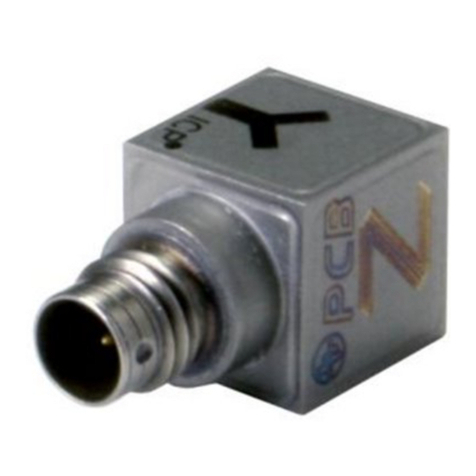
PCB Piezotronics
PCB Piezotronics 356A44 Installation and operating manual
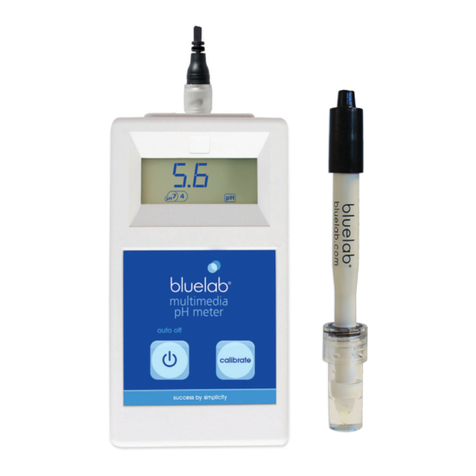
bluelab
bluelab Multimedia pHMeter Care and use guide
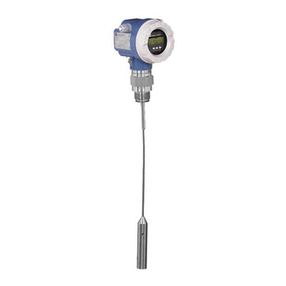
Endress+Hauser
Endress+Hauser Levelflex M FMP40 operating instructions

Agilent Technologies
Agilent Technologies WireScope 350 user guide

Endress+Hauser
Endress+Hauser Proline Promass I 300 PROFINET operating instructions
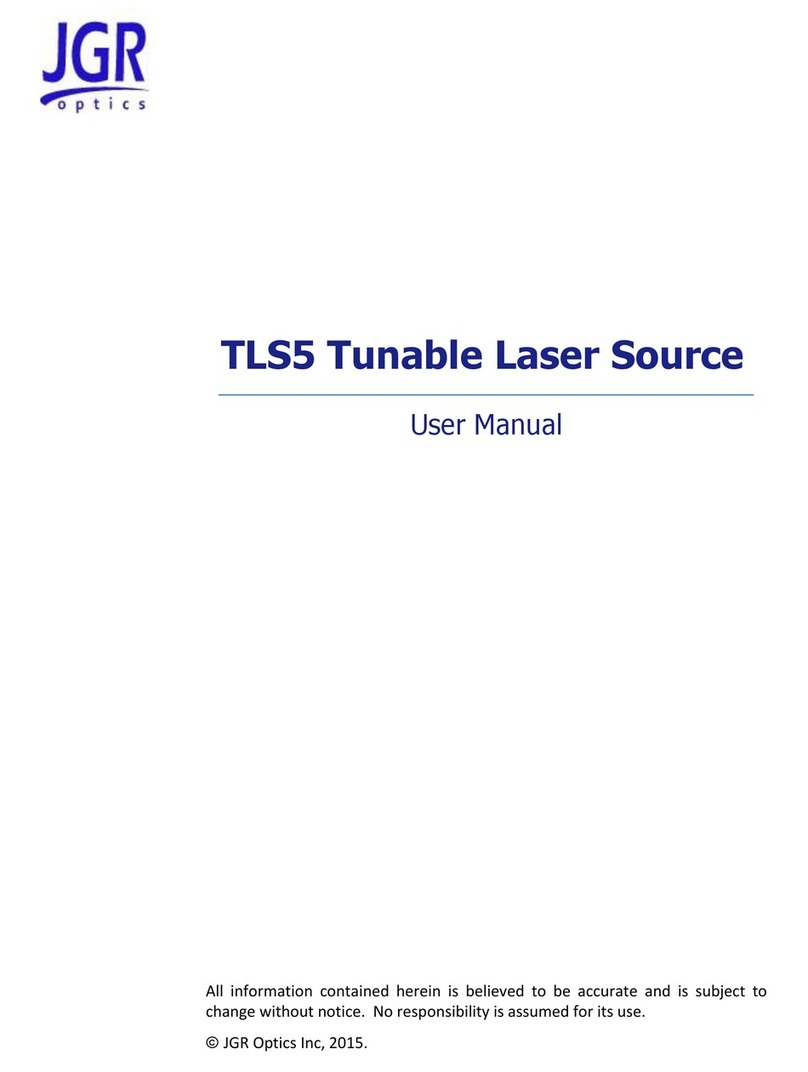
JGR
JGR TLS5 user manual
